- What to See while Waiting for your Hagia Sophia Tickets
- The Hidden Beauty on the Balcony at the Hagia Sophia in Istanbul
- The Shunned Hidden Crosses in the Hagia Sophia’s Courtyard
- The New Hidden Items in the Hagia Sophia
- A free walking tour around Hagia Sophia
Despite the attempts to make the building an Islamic exhibition, take advantage of some new glimpses on the balcony at the Hagia Sophia visit (Aya Sofya Camii), once the largest church in the world from 537 to 1506 AD. As advertised: Once a church, later a Mosque[1]https://muze.gen.tr/muze-detay/ayasofya The balcony has been closed for a few years, but Jan. 2024 opened up this area again but closed most of the lower floor. We will explore what can still be seen from the second floor.

A key QR website connected to this tour is https://ar.demx.org.tr/, which explains key areas on the second floor. Once saved, you can refer to this site later or while you walk the balcony with the QR codes presented. The historical write-up on that site is well done and insightful.
My insights will show other things to see when at each point.
Northeast area of the Balcony
Before one walks to the first QR sign, take a look over the balcony as soon as you enter.
The Byzantines loved the cross, and the archways, beams, and capitals display multiple forms of it. The original church had no icons but numerous displays of scientific wisdom, Eden-like floral designs, and natural marble beauty. The intent is to look at and praise God for his greatness. As you meditate on the cross, remember the beauty of a church that focused all worshipers on looking above.
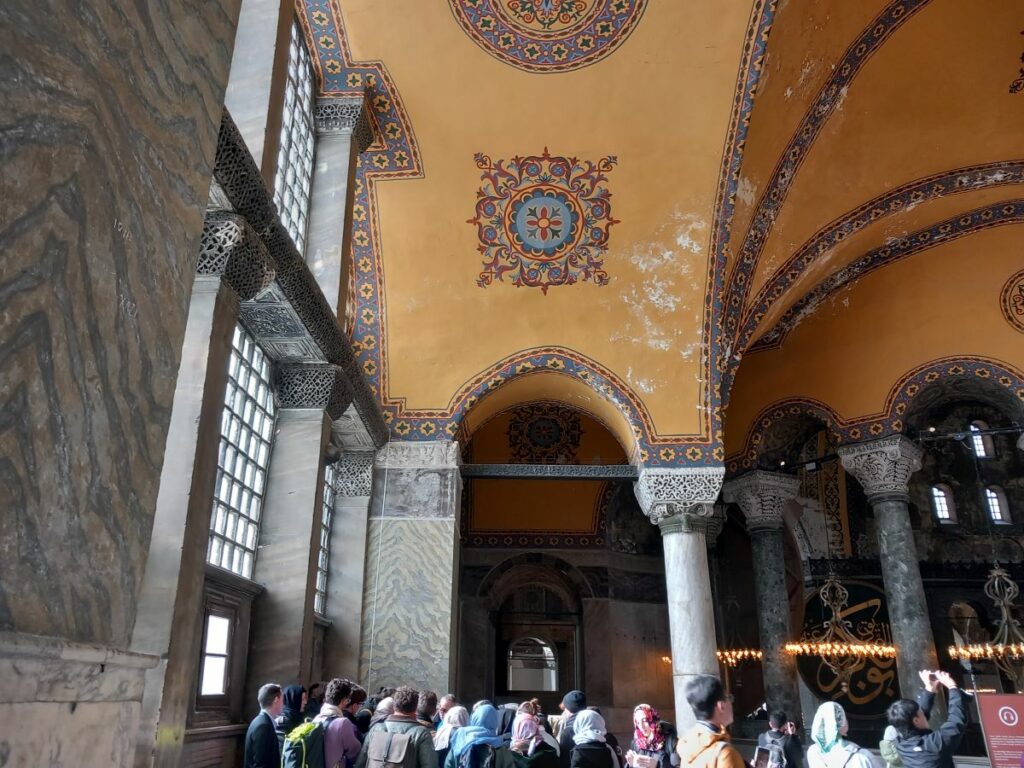
North Balcony of the Hagia Sophia (QR # 1)
Near to Emperor Alexander’s Mosaic, which sits on the inner archway above the display sign. Looking over this balcony, notice the marble wall barriers, each displaying the cross; however, now most are desecrated and rubbed off. Still, many Byzantine sacred symbols reveal their past purpose. The panel on the right below displays three crosses, while the left has three rubbed-out ones.

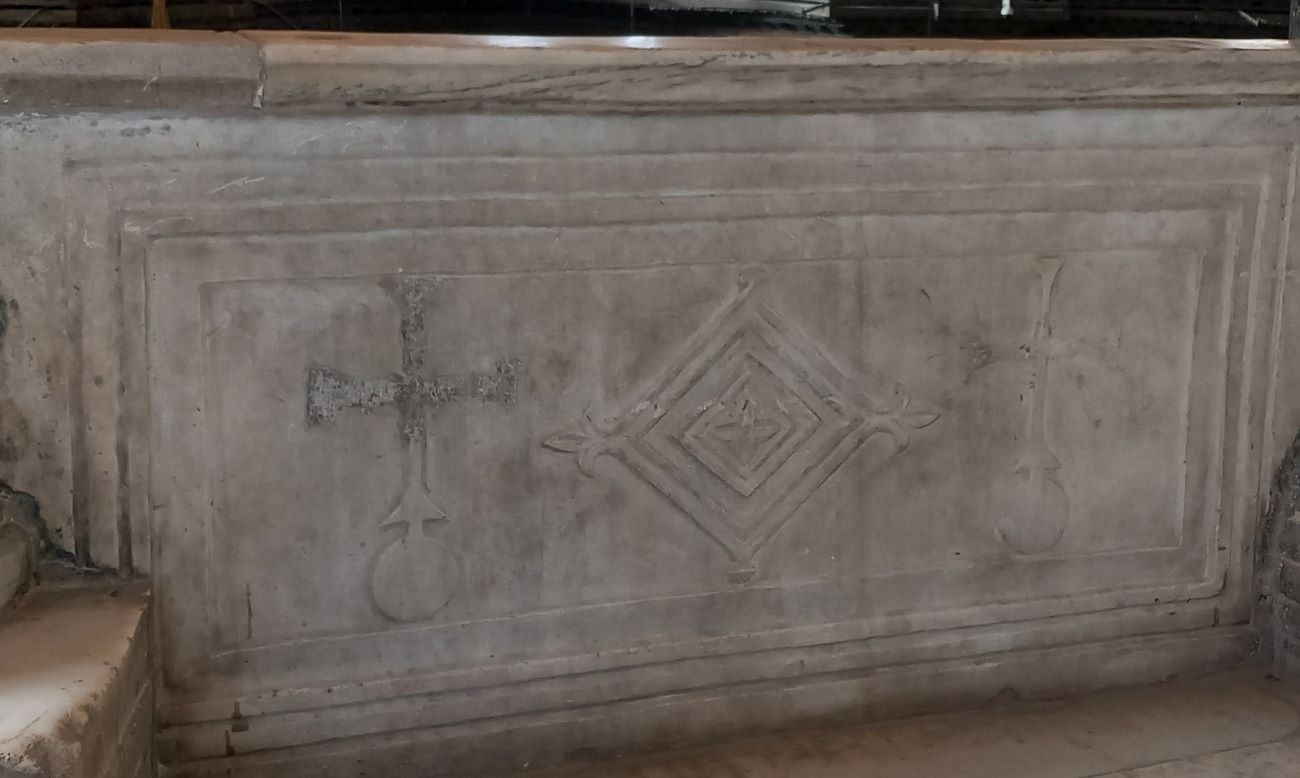
This location provides a good overlook of the main sanctuary. Despite the Islamization writing covering the upper part, multiple crosses can be observed on the vertical support structures (picture below).
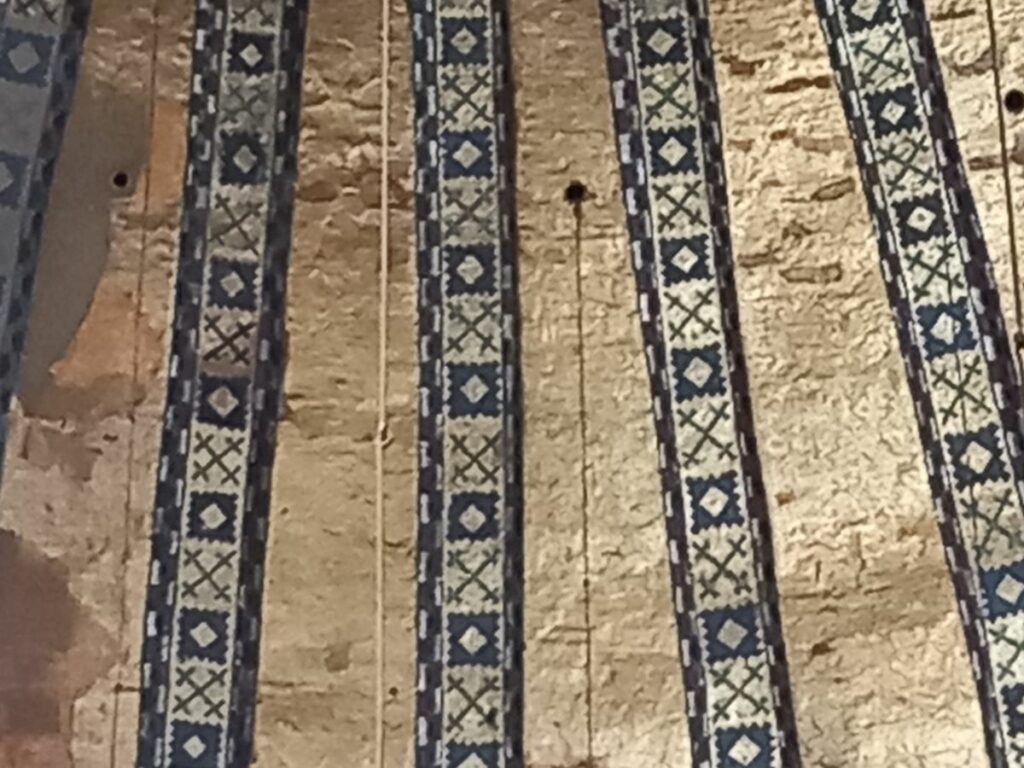
Also, between the two Seraphim angels and under the windows are circular displays of crosses that have not been renovated for hundreds of years.

# 2 – Main Sanctuary Hagia Sophia
At the empress’ marble circle, one can see the covered golden mosaic of a throned Mary with the infant Jesus lying in the center of the sanctuary’s Apse. The 9th-century depiction marks the success of Icons back into Byzantine churches after the Iconoclasm period of breaking icons.[2]https://www.metmuseum.org/toah/hd/icon/hd_icon.htm This icon highlights the intensity of that period consumed with the Virgin Mary’s veneration.
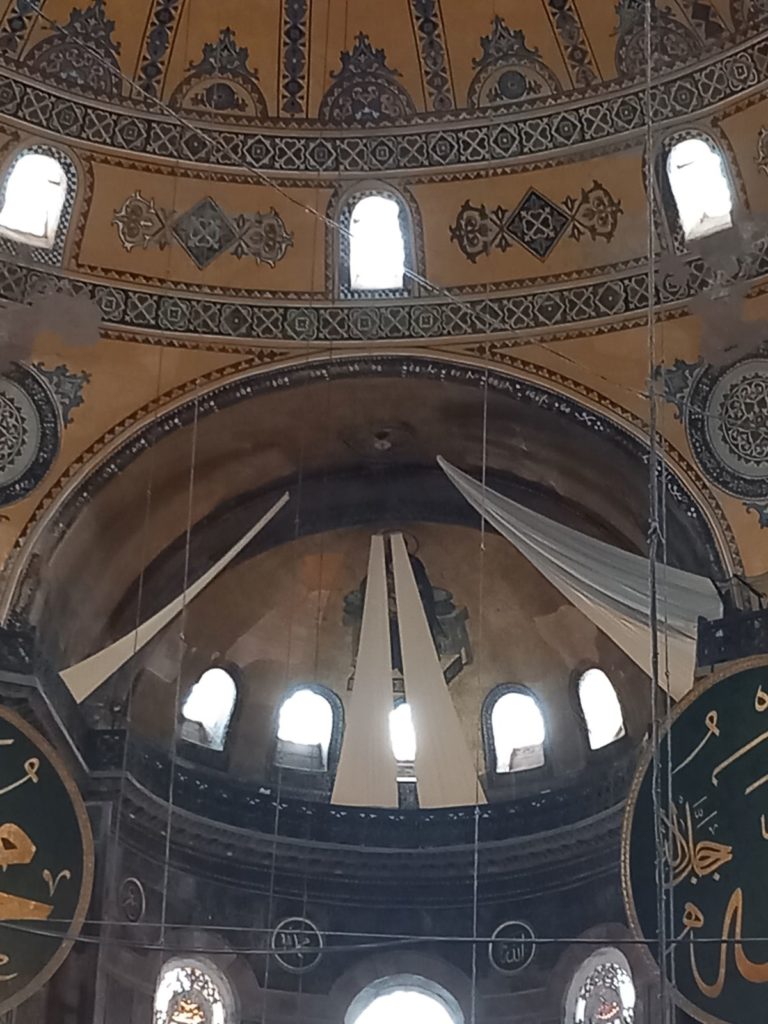
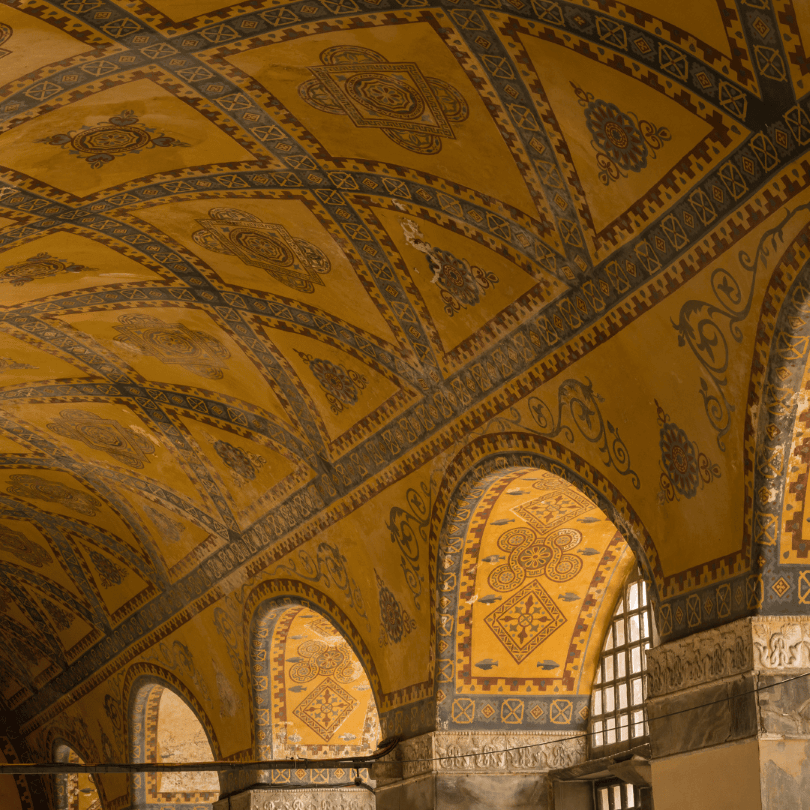
The upper west side hallway heading toward the office of the Patriarch showcases cross-filled archways of immaculate beauty. This area hosted the queen and, later, Byzantine centuries, the women’s section for worship.[3]see this excellent write-up concerning this area. https://www.pallasweb.com/deesis/west-gallery-of-hagia-sophia.html Crosses flood this area, particularly on the balcony perimeter wooden beams and the marble wall barriers. Initially, the corridor view had large crosses on each end. Those offended by the cross desecrated any cross within reach.
# 3 and 4 Patriarch’s Study and Wall
At the end of the hall is the Patriarch’s office, which also previously housed key documents. This office has not been open to the public for centuries. Behind the door lies a mosaic that honors Christ on his throne. Bob Atchison’s Byzantine site gives pictures of some of these hidden mosaics in side vaults and rooms. Even on the balcony of the Hagia Sophia, hidden beauties hide.
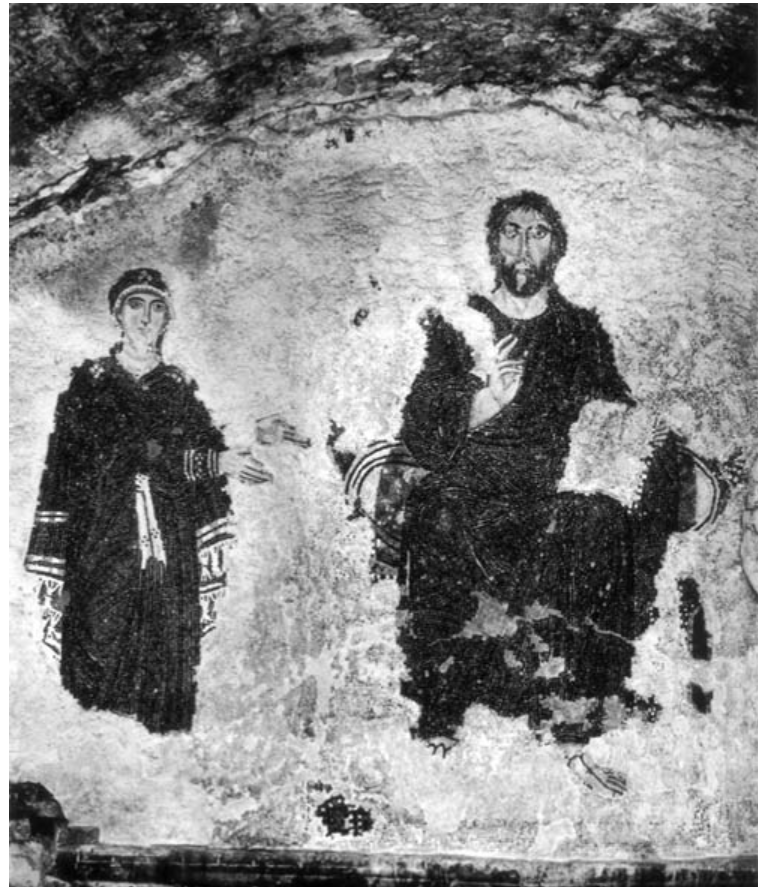
On the upper southern side, the marble door granted entry to the area of multiple synods. The marble wall represents the barrier between the public and private, but it also displays the intolerance of the cross-like and biblical images that formerly graced each panel. On the right side, notice the two fish and the tree of life. On the other side, the outline of two large crosses remain, forbidding total destruction by unbelievers.
At this point, I recommend that you and your companions pray a short prayer together, giving praise to God. He is the all-wise heavenly wisdom, and the symbols of our faith grant us the encouragement to pray discreetly again in this church.
The Southern inner balcony area
The guard will direct you left toward the Viking markings when you enter this area beyond the marble gate. From that area of the balcony of the Hagia Sophia is the best place to see the following:
1. The uncovered Seraphim on the northeastern archway.
2. The wall of saints on the upper northern area below the dome. Originally fourteen archways (seven on the north wall, seven above where you are standing on the southern wall) depicted different influential fathers of the church, but today only three remain on the northern wall.[4]https://www.pallasweb.com/deesis/john-chrysostom-hagia-sophia.html
3. The lower opened marble area where they anointed the Byzantine Emperors.
When visiting the small nook on your left, one can see the mosaic below. From that point, one can see the central inner dome and glimpse items not seen from other perspectives.
Mosaics on the Balcony
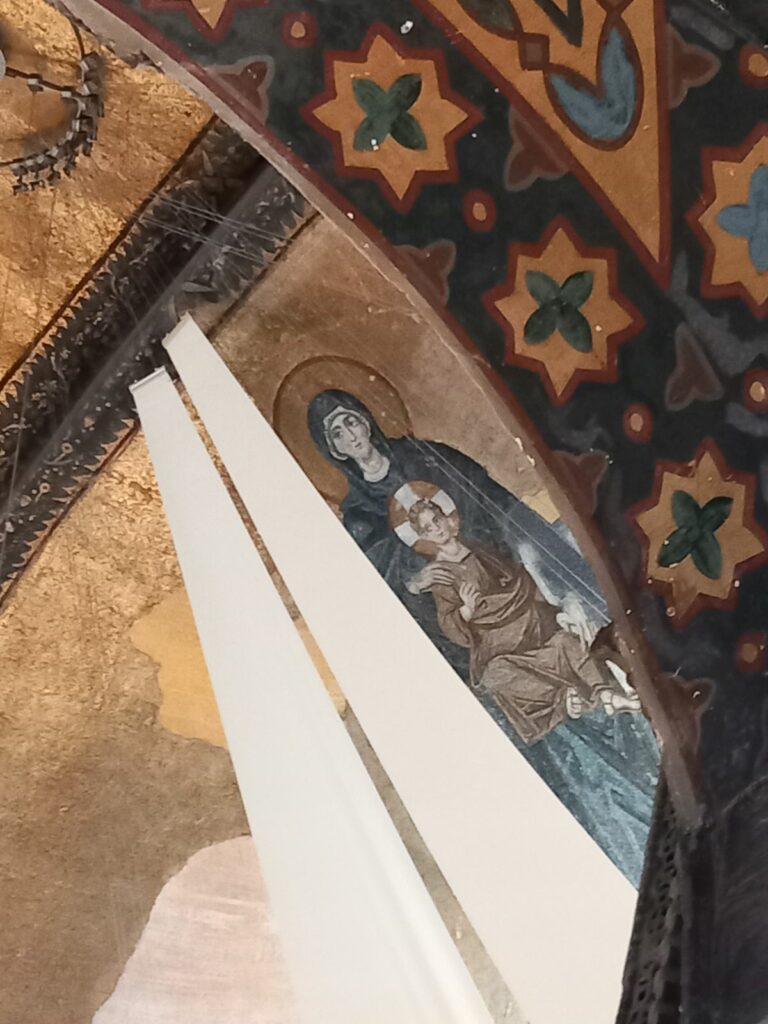
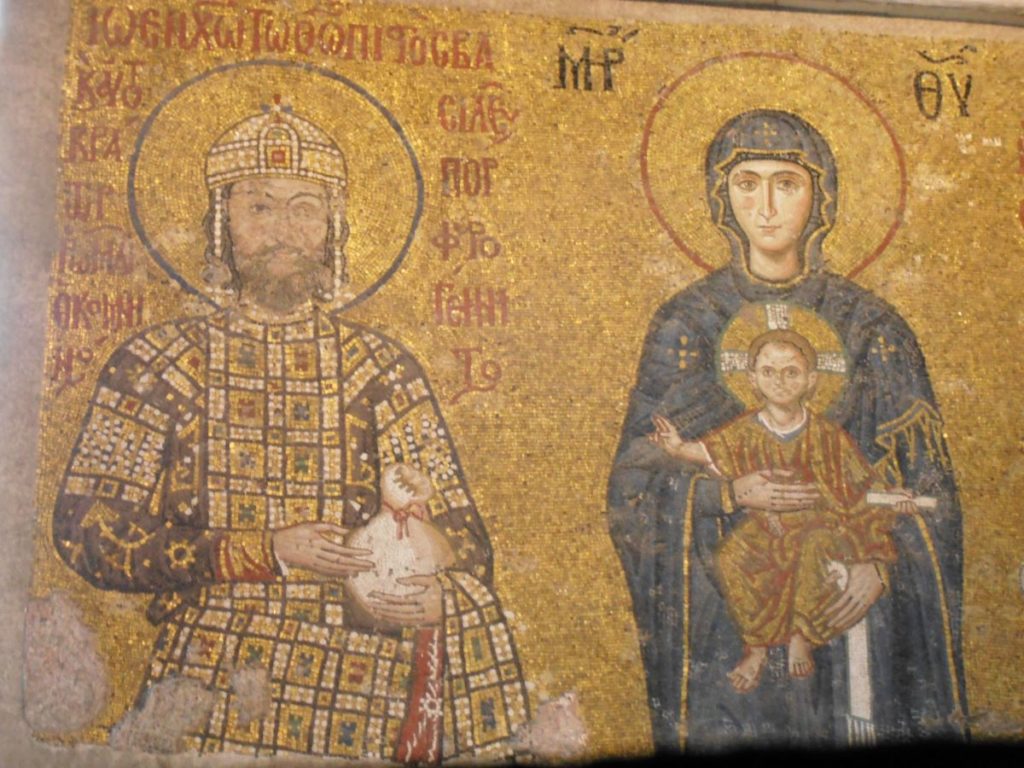
The Byzantine Empire John Komnenos II and his wife (Irene, not depicted in pic) symbolize an offered donation. This mosaic sits upon the far eastern wall. Also not displayed is the slight sinking of this corner wall area which becomes apparent in this balcony section with a slightly sloping floor. Also the pillar in this section leans and gives hint to the historic structure issues.
As mentioned in my article about what to see when waiting in line, this door led to a bridge connecting to the Byzantine Palace. This door was a key passageway to the former Palace east of the church for the empress or other officials to come to the balcony.
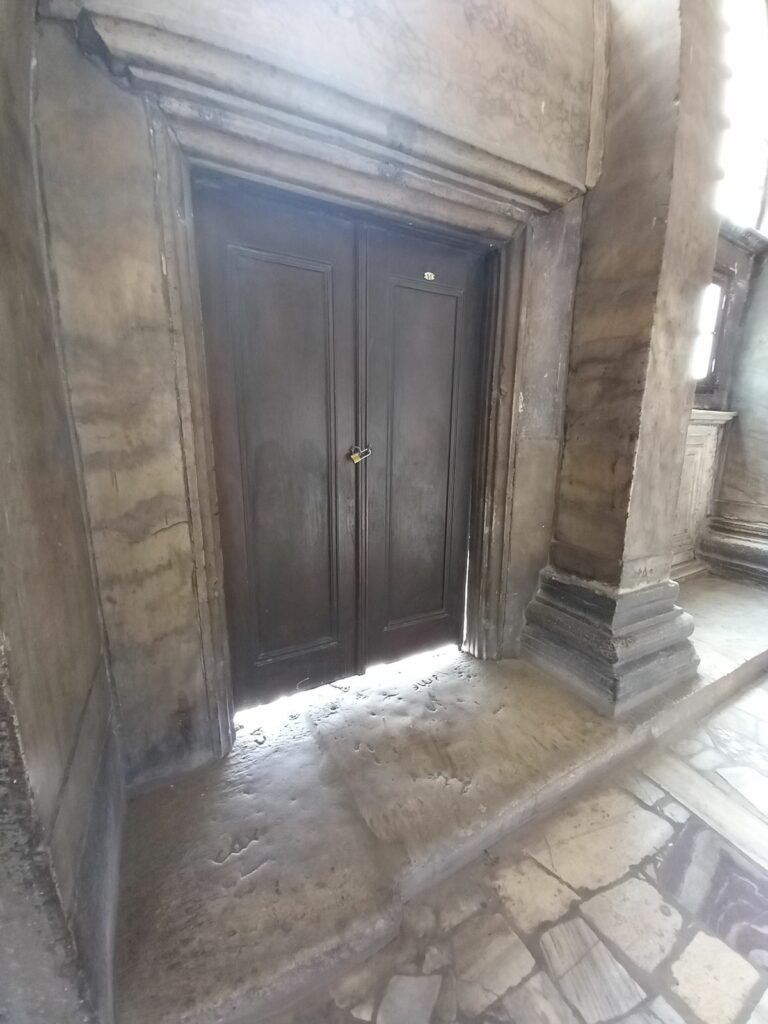
Thanks to Dan Brown’s Inferno, the existence of the Latin invader’s grave, Enrico Dandolo, has become popular. Yet in the film starring Tom Hank, they mistakenly place the grave on the ground level of the ancient church, most likely not to highlight the location. However, the marker remains in the southern balcony area with a floor-level simple stone. The grave has a desecrated cross on the surface, but his name remains in Latin script.[5]https://hagiasophiaturkey.com/tomb-enrico-dandolo/ This Venetian conqueror may be the only one buried within the ancient church.
The three figures of the Virgin Mary, the Lord Jesus, and John the Baptist embody the centrality of Christ. He is the Word of God and holds the Bible in his left hand. Unfortunately, pilgrims vandalized this mosaic by seeking a piece of these small colored stones. Those seeking a spiritual part to take entirely harvested the lower level in previous centuries. The restored mosaics illustrate some of the beauty and wonder.
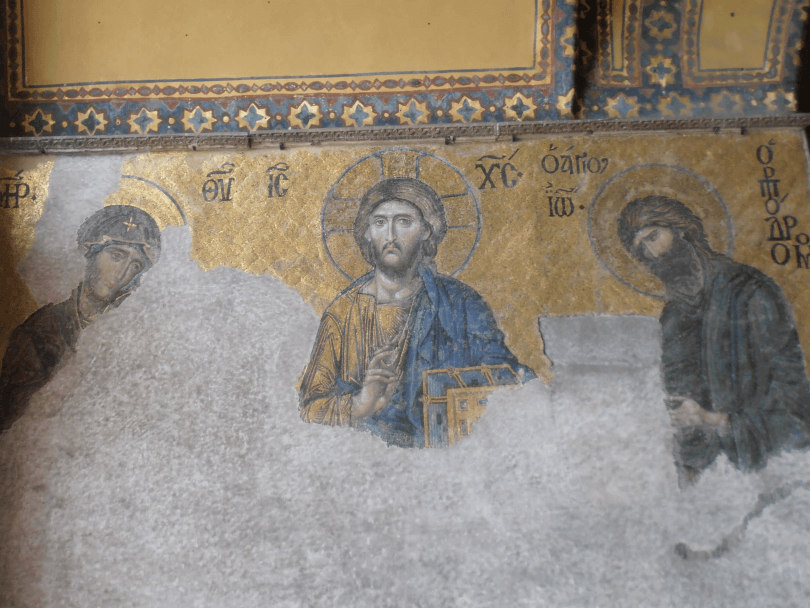
Lower Level Finds near Exit
The downward southwestern exit from the balcony of the Hagia Sophia is a stairwell that has not been open in modern times. To the right of the exit, the patriarch’s office narrowed the original stairwell and doors on the left, leading to that area. After this, some of the upper levels show original Justinian pavement.[6]https://doi.org/10.2307/1291407 The Mosaics of St. Sophia at Istanbul: The Rooms above the Southwest Vestibule and Ramp by Robin Cormack and Earnest J. W. Hawkins, 184.
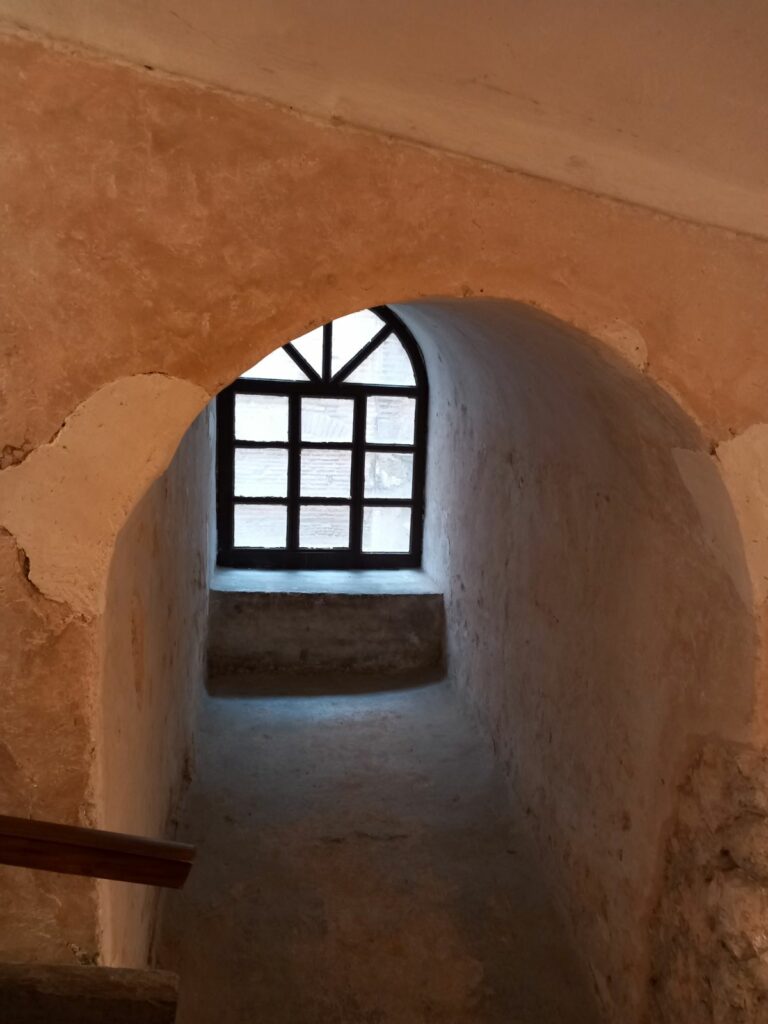
Toward the bottom of this stairwell, one can look into the baptism room, which has one of the largest marble baptism chambers. As you go down, look for entryways and windows on your left to glimpse this area.
Through the window, the outline of the baptism can be seen. Between the pillars are the steps of entry to the baptism.
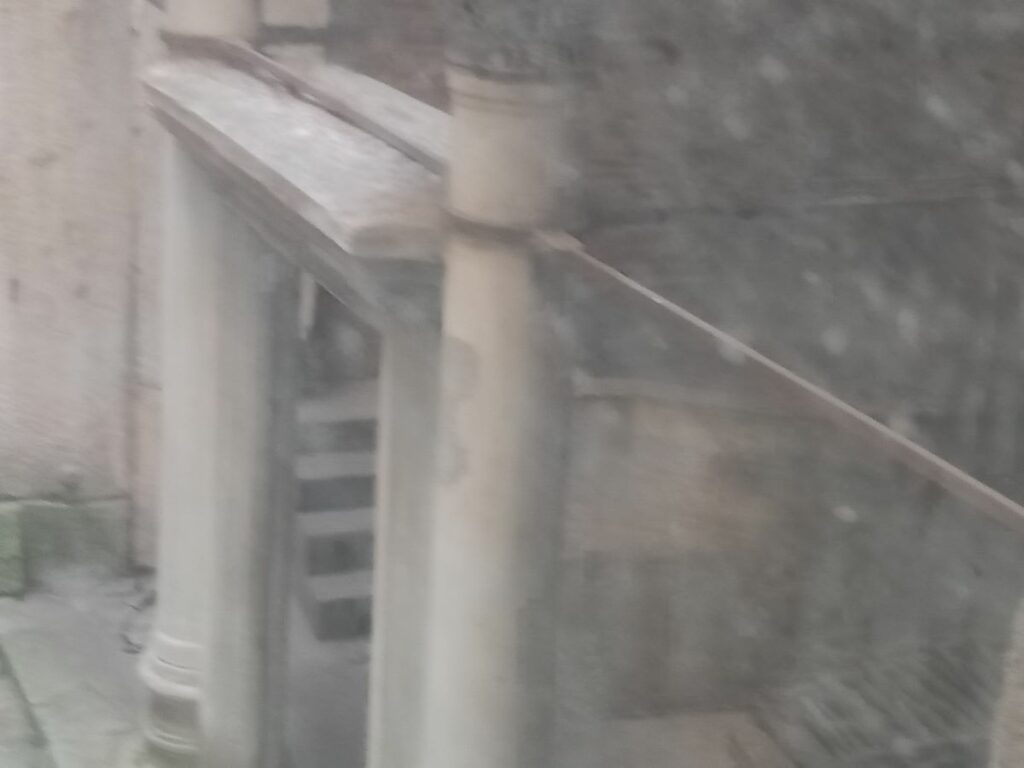
The most significant loss is the closure of the Baptism room just past the exit hallway. This room was only sometimes open to the public, even previously when a museum. Haluk Çetinkaya said in his excellent historical account, said, “The huge baptism pool made from a single slab of marble which is the largest baptism pool in Turkey, and possibly one of [the] largest in the world is situated outside the baptistery.”[7]https://istanbultarihi.ist/690-hagia-sophia After visiting this site many years ago, I placed this on my screen saver pics. One day, I noticed that the shape of the baptismal marble is a fish design. In the Hagia Sophia, a few fish designs can be found in marble or on the painted walls. The fish symbol, one of secrecy when Christian persecution existed in the region, now they could identify openly in baptism to Christ’s death and resurrection.
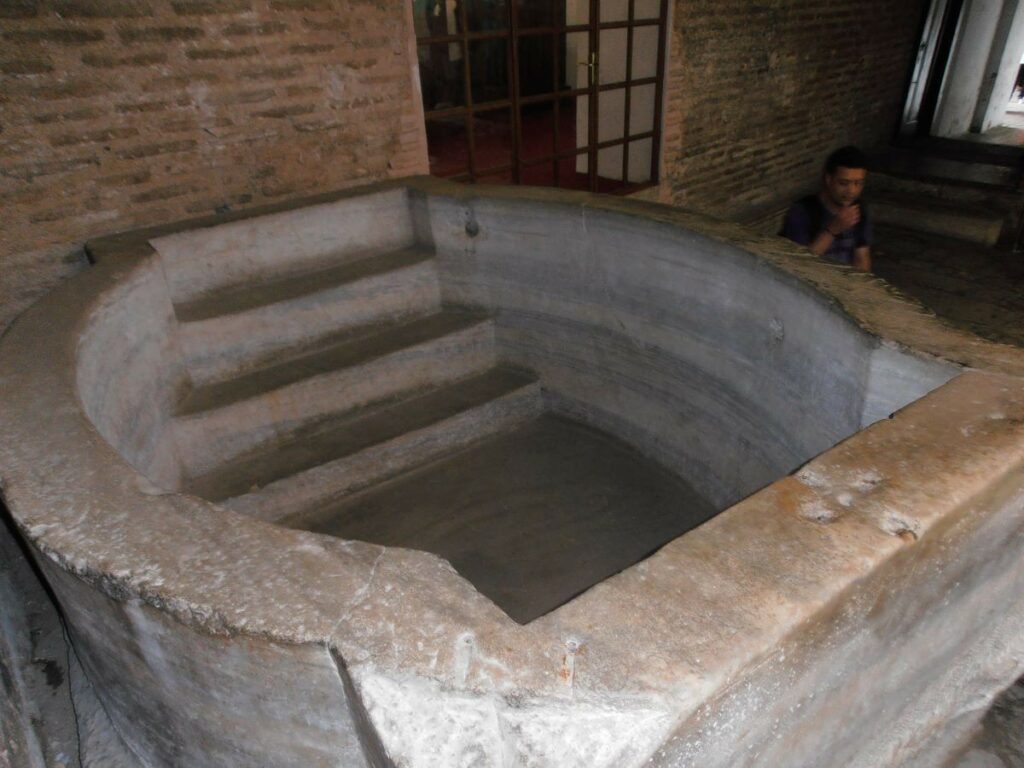
A Mirror Image
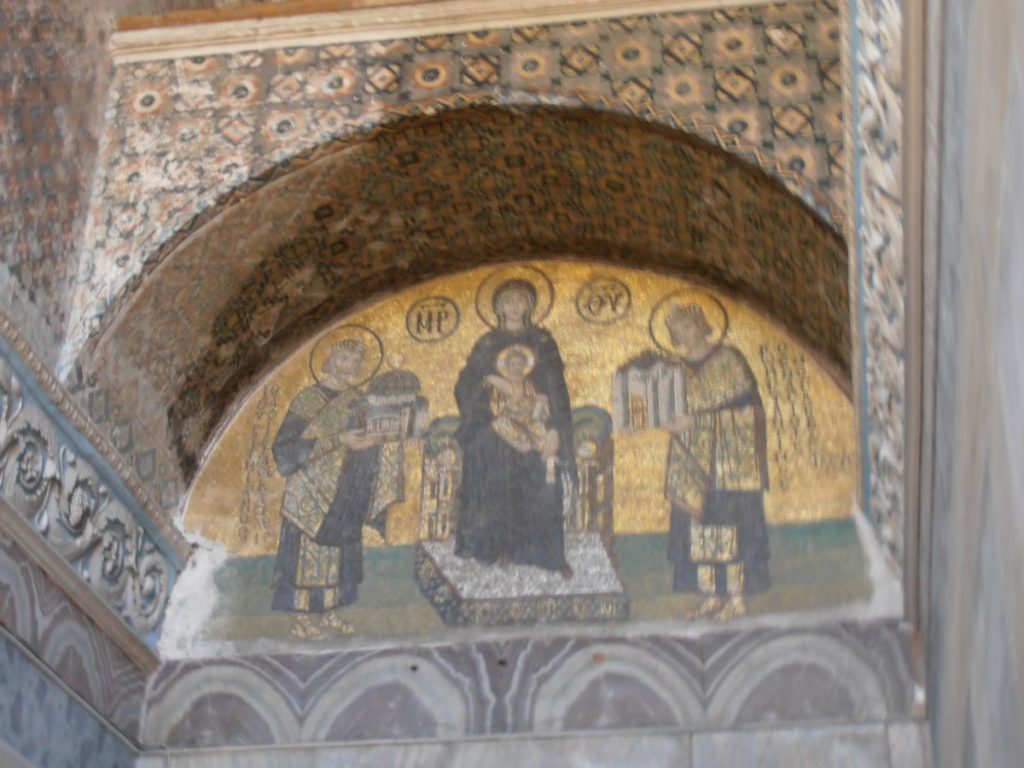
Exiting toward the south, formerly the church’s entrance vestibule. The mirror above the door displays the mosaic which you just walked under. The Byzantine royalty honored their worship place by placing symbols to turn one’s mind toward God’s greatness. This was previously a main entryway from the square on the south end. Notice in Justinian’s hands that he gives a model of the church with a cross on top. I wrote about this possibility in Hidden Crosses in the Courtyard.
A visit to the Hagia Sophia demands an online visit to see what you missed. In times past, this beautiful building allowed a fuller historic Christian picture, but now a dominating exterior display of Islam shuns displaying these sacred items. To not lose the rich Christian history at Hagia Sophia, share this information so visitors will realize how God worked through the inhabitants of this great city to demonstrate His sovereignty and love.
If going on to Ephesus on tour, look at Hidden Crosses in Ephesus.
References
| ↑1 | https://muze.gen.tr/muze-detay/ayasofya |
|---|---|
| ↑2 | https://www.metmuseum.org/toah/hd/icon/hd_icon.htm |
| ↑3 | see this excellent write-up concerning this area. https://www.pallasweb.com/deesis/west-gallery-of-hagia-sophia.html |
| ↑4 | https://www.pallasweb.com/deesis/john-chrysostom-hagia-sophia.html |
| ↑5 | https://hagiasophiaturkey.com/tomb-enrico-dandolo/ |
| ↑6 | https://doi.org/10.2307/1291407 The Mosaics of St. Sophia at Istanbul: The Rooms above the Southwest Vestibule and Ramp by Robin Cormack and Earnest J. W. Hawkins, 184. |
| ↑7 | https://istanbultarihi.ist/690-hagia-sophia |
Hagia Sophia has always been on my bucket list. My best friend visited there. She said Hagia Sophia is soooo beautiful.